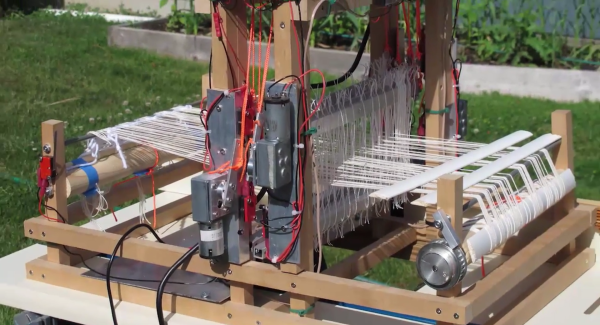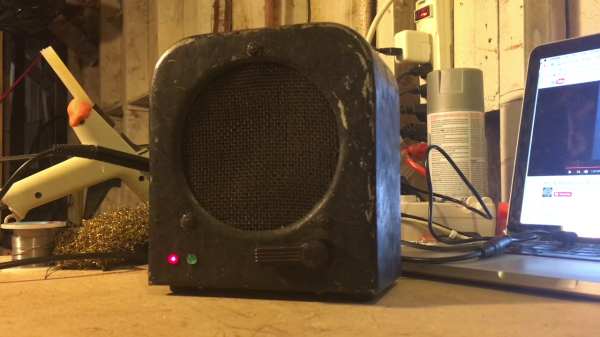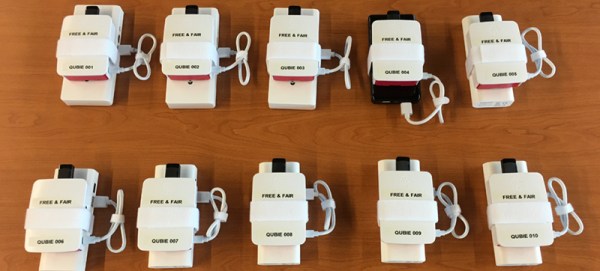CNC routers and 3D printers are cool, but the last time I checked, cars and heavy machinery aren’t made out of wood and plastic. If you want a machine that will build other machines, you want a CNC plasma cutter. That’s [willbaden]’s entry for the Hackaday prize. It’s big, massive, and it’s already cutting.
A plasma CNC machine isn’t that much different from a simple CNC router. [will]’s table controller is just a GRBL shield attached to an Arduino, the bearings were stolen from many copy machines, and your motors and drivers are fairly standard, barring the fact they’re excessively huge for a simple 3D printer.
The real trick up [will]’s sleeve is the controller interface. For this, he’s mounted a Raspberry Pi display, a big, shiny, red button, and all the associated electronics behind a beautifully rusty welded enclosure. This part of the build just sends gcode over to the GRBL shield, and is doing so reliably. Right now [will] is looking for some way to save, arrange, and queue jobs on the Pi, a problem that is almost – but not quite – the same job Octoprint does. A software for big, mean CNCs that spew exotic states of matter is an interesting project, and we can’t wait to see where [will] goes with this one.





















